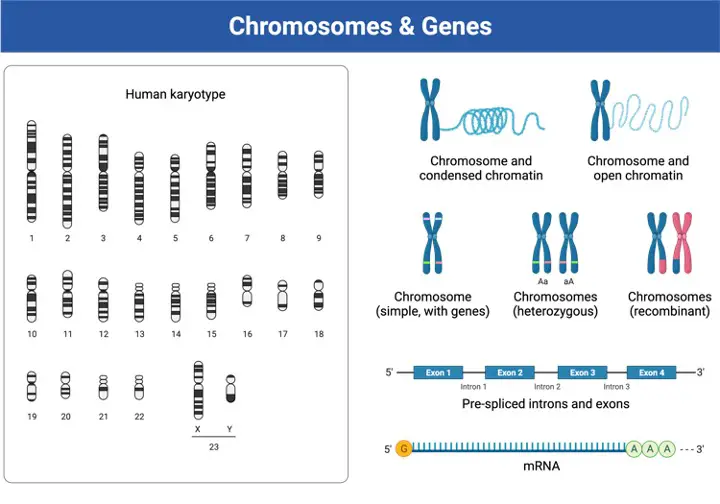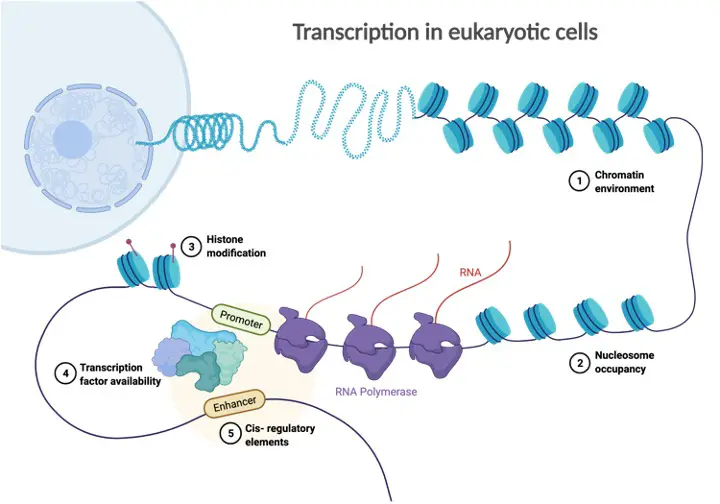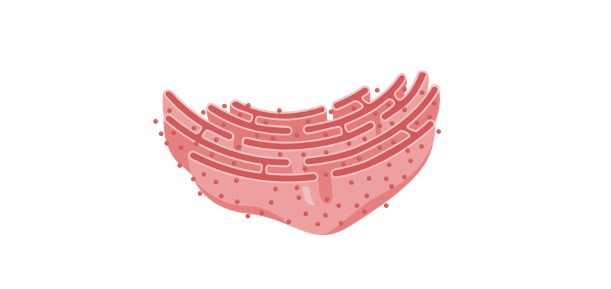Table of Contents
Gene Definition
Because a gene is made up of nucleotides (on a specific location on a chromosome) that are responsible for an organism’s physical and heritable traits or phenotype, it is referred to as the fundamental, physical, and functional unit of heredity. As a result, it defines the structure of a protein as well as an RNA molecule.
The term gene is derived from the German gen, which means “begetting,” or from the Greek genos, which means “race” or “offspring.” synonyms: determinant (obsolete).
What is Gene?
The gene is the fundamental, physical, and functional unit of heredity. DNA sequences are made up of genes (genotypes). The genotypes, in combination with other variables (such as environmental influences), define an organism’s phenotypic characteristics. Evolution and natural selection are fueled by changes in the DNA.

Previously, the gene was known as a factor. The “Father of Genetics,” Gregor Mendel, was the first to discover the existence of a gene as a separate heritable element. Based on his careful breeding experiments on garden pea plants, Mendel formulated the laws of heredity.
It was later dubbed “gene” after Wilhelm Johannsen, a Danish botanist and plant physiologist, coined the term in 1905. Male and female parents produce fluids that blend or mix during conception, according to prevalent thinking before Mendel’s study.
The particles that mix during fertilisation are referred to as gemmule by Charles Darwin. In 1886, Mendel’s work was published. It was only in the late 1900s that it became widely recognised, since it was backed up by similar findings in the writings of Hugo de Vries, Carl Correns, and Erich von Tschermak.
In the next century, more research led to a better knowledge of the gene’s molecular structure and function. The gene was discovered to be made up of expressed DNA. Rosalind Franklin and Maurice Wilkins’ work, as well as James D. Watson and Francis Crick’s following work, established DNA structure. Genetics is the scientific study of the patterns of inheritance of certain traits, including genes, genetic information, and heredity.
Gene vs Genome
The whole set of genetic material in an organism is referred to as the genome. As a result, the genome refers to all of the genes found inside a cell, including nuclear and extranuclear genes. A bacterium’s genome, for example, refers to the entire single chromosome contained within it. The human genome, on the other hand, contains around 35,000 genes and three billion chemical base pairs.
Gene vs Allele
Alleles are variations of a gene that regulate the same characteristic and are located in a specific location on a chromosome. A pair of alleles or the interplay of a sequence of alleles, as in the case of multiple allelic characteristics, can determine a specific trait (or polygenic inheritance). Certain characteristics are determined by a pair of alleles, one dominant and the other recessive.
Gene Structure and Function
A gene is a nucleotide sequence in a specific nucleic acid. As a result, it is a piece of DNA or RNA that, through gene expression, encodes for either an RNA or a protein. A nucleic acid’s structural unit is the nucleotide.

Phosphoric acid, sugar (5-carbon), and a nitrogenous base make up this compound. 3′, 5′ phosphodiester linkages connect the nucleotide chains of a nucleic acid. This indicates that one nucleotide’s 5′-phosphoric group is esterified with the 3′-hydroxyl of the nucleotide next to it.
Gene Expression
Gene expression is the process of converting information from a gene into mRNA (transcript), which is subsequently translated into protein. As a result, there are two key stages in gene expression: Transcription and translation With the aid of the enzyme RNA polymerase, the gene code for a certain protein is transcribed to mRNA during transcription. Nitrogenous base pairing drives the process in the 5′ →3′ direction.
Guanine is paired with cytosine (and vice versa), thymine is paired with adenine, and uracil is paired with adenine (instead of thymine). Transcript takes place in the cytoplasm in prokaryotes, but predominantly in the nucleus in eukaryotes before the mRNA is transferred into the cytoplasm for translation or protein synthesis.

During translation, the resultant mRNA is decoded to generate a protein with a particular sequence of amino acids. It occurs on ribosomes in both prokaryotes and eukaryotes. In eukaryotes, however, it occurs on ribosomes connected to the endoplasmic reticulum’s surface (ER).
Initiation, translation elongation, and translation termination are the processes that make up a translation. During the initiation step, the ribosome connects to the mRNA, and then the tRNA attaches to the transcript’s start codon.
Following that, translation elongation occurs, in which tRNAs bring a certain order of amino acids to the ribosome site depending on the predetermined sequence of codons in mRNA. A peptide bond connects the amino acids in a chain.
The translation of the newly produced protein stops when it reaches the stop codon in the mRNA, and the newly formed protein develops through protein folding or post-translation changes. The phenotypic manifestation of a gene is determined by its expression.
Inheritance
Inheritance is the transfer of characteristics from parents to children depending on the expression of transmitted genes. Mendelian inheritance is the inheritance of a certain characteristic that follows Mendelian laws such as the Law of Segregation, the Law of Independent Assortment, and the Law of Dominance. Non-Mendelian inheritance, on the other hand, does not obey Mendelian rules. Codominance, partial dominance, and polygenic inheritance are examples of non-Mendelian heredity.
Mutation
It’s possible that the genes will alter genetically. These alterations are referred to be mutations when they are persistent and heritable. When genes change, alleles (variants) are produced, resulting in phenotypic trait variations within a population. Small-scale mutations and large-scale mutations are the two main types of mutations.
One or a few altered genes are involved in small-scale mutations. Deletions, substitutions, and insertions of one or more nucleotides are examples. A large-scale mutation occurs when multiple genes are implicated, such as a section of a chromosome or perhaps the entire chromosome.
A chromosomal portion or the entire chromosome can be deleted, inverted, or amplified, for example. Large-scale mutations are frequently fatal or fatal.
Application
Biotechnology has altered genes in medicine and the biomedical area. The method is known as genetic engineering, in particular. To change genes or repair DNA, scientists and researchers created gene-editing methods. One of the most popular uses is to insert a gene into the genome of bacteria, allowing the bacterium to produce a target protein for use in medicine, industry, or agriculture. Editing or mending genes in multicellular creatures is used to cure genetic disorders. This is the goal of gene therapy.
Gene Citations
- Collagen gene structure. Biochem Soc Trans . 1988 Oct;16(5):661-3.
- Resurrection from lethal knockouts: Bypass of gene essentiality. Biochem Biophys Res Commun . 2020 Jul 30;528(3):405-412.
- Functions of DNA methylation: islands, start sites, gene bodies and beyond. Nat Rev Genet . 2012 May 29;13(7):484-92.
- Figures are created with BioRender.com







